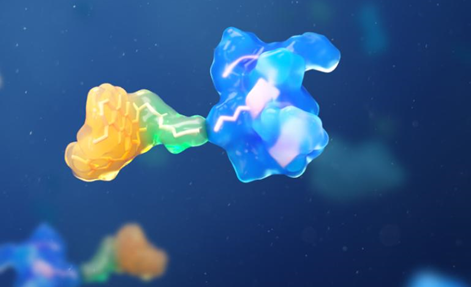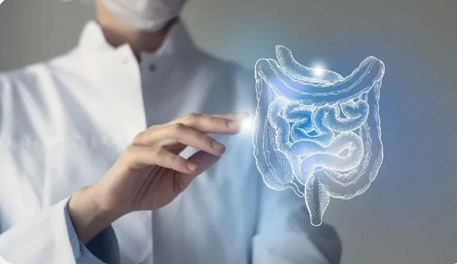Peptide-drug conjugates (PDCs) are revolutionizing cancer treatment by honing drug selectivity. This innovative approach integrates potent drugs with targeting agents, steering medications directly to cancer cells while sparing healthy tissues. Such precision ensures maximum impact on tumors with minimal adverse effects, a significant leap from traditional therapies. By focusing on the specific characteristics of cancer cells, PDCs increase the therapeutic index and enhance patient outcomes. This blog elucidates the mechanisms by which PDCs elevate drug selectivity, supported by insights from renowned research entities like WuXi AppTec. Understanding these mechanisms not only provides a deeper appreciation for PDCs but also highlights their potential to transform cancer treatment paradigms.

Mechanisms by Which PDCs Improve Drug Selectivity
PDCs employ multiple mechanisms to enhance drug selectivity. They deliver drugs to specific cancer-cell targets, improve penetration into tumors, reduce systemic toxicity, and enhance drug solubility and permeability. These mechanisms collectively decrease adverse side effects, making the peptide-drug conjugate a promising option in cancer therapy advancements.
Targeted Delivery
PDCs offer precise drug delivery by employing ligands or antibodies that specifically bind to receptors overexpressed on cancer cells. This binding mechanism ensures that the therapeutic agents concentrate on the diseased cells, bypassing normal tissues. Such targeting improves the efficacy of the drug, as it reaches higher concentrations in tumor sites compared to non-targeted therapies. With enhanced binding affinity, PDCs capture the abnormal proliferative signals characteristic of cancer, leading to more effective cytotoxic activity directly at the tumor site. Consequently, targeted delivery not only maximizes cancer cell eradication but also significantly minimizes unwanted systemic distribution of the drug. This specificity is pivotal for reducing the risk of side effects, drastically improving patient comfort and compliance in cancer treatments.
Enhanced Tumor Penetration
PDCs enhance drug penetration through tumors by efficiently navigating the complex extracellular matrix. They utilize small molecular size and hydrophilic characteristics, which allow them to diffuse more effectively into dense tumor masses that often resist conventional drugs. This enhanced penetration ensures that the therapeutic agents reach even the interior of solid tumors, destroying cells at the core that might otherwise survive conventional treatment. Improved permeability is essential as it maximizes the contact of the therapeutic agent with cancer cells, sparing the healthy surrounding tissues. Such strategic penetration minimizes the likelihood of drug resistance and contributes to more comprehensive tumor eradication. This quality underscores PDCs’ role in conquering the strongholds of cancerous tissues, making them an invaluable tool in the oncologist’s arsenal.

Reduced Systemic Toxicity
PDCs reduce systemic toxicity by delivering cytotoxic drugs specifically to cancer cells, effectively minimizing their distribution in healthy tissues. This precision targeting drastically reduces the off-target interactions that often lead to harmful side effects in conventional chemotherapy treatments. By concentrating the therapeutic effects on the localized tumor environment, the surrounding normal cells remain largely unharmed, preserving the patient’s overall health. Additionally, this targeted approach to drug delivery helps in lowering the required therapeutic doses, further diminishing the burden on the patient’s system. As the drug interactions are confined to the cancer cells, patients experience fewer and less severe side effects, resulting in improved quality of life and adherence to treatment protocols.
Improved Drug Solubility and Permeability
The design of PDCs focuses on enhancing drug solubility and permeability, critical factors for effective drug delivery. By conjugating drugs with high-affinity targeting moieties, PDCs improve the water solubility of hydrophobic anticancer agents, facilitating better absorption and distribution. This characteristic allows the therapeutic compounds to traverse biological membranes with ease, ensuring efficient systemic circulation and targeting the tumor site effectively. Improved solubility translates to increased bioavailability, meaning the drugs are more readily utilizable by the body. Furthermore, the enhanced permeability ensures deeper penetration into the tumor matrix, achieving more thorough cancer cell kill rates. This optimized drug delivery system not only boosts therapeutic efficacy but also significantly reduces the required dosages, thereby lowering the risk of toxicity.
Reduced Side Effects
Incorporating PDCs in cancer therapy substantially reduces side effects commonly associated with traditional treatments. By concentrating therapeutic activity directly on cancer cells and minimizing exposure to healthy tissues, patients experience markedly fewer adverse reactions. This targeted approach also allows for a lower dosage of chemotherapy drugs while maintaining or even improving efficacy, further reducing the risk of side effects such as nausea, fatigue, and immunosuppression. The strategic delivery diminishes off-target effects, which often pose significant risks to patients undergoing cancer treatment. As a result, patients benefit from an improved quality of life, fewer interruptions in treatment due to intolerable side effects, and potentially better overall prognosis and treatment success.
Potential for PDCs Combination Therapies
The potential of PDCs extends to combination therapies, offering synergistic effects with existing cancer treatments. By integrating PDCs with other therapeutic modalities like immunotherapy or radiotherapy, the efficacy of cancer treatments can be significantly amplified. This combination approach targets cancer cells from multiple fronts, potentially overcoming resistance mechanisms that limit the effectiveness of singular treatments. Moreover, the specificity of PDCs reduces the cumulative toxicity often observed in combination regimens, allowing for more aggressive treatment strategies. Patients benefit from a dual approach that not only increases tumor eradication but also preserves healthy tissue integrity. These combination therapies can adapt to various cancer types and progression stages, enhancing the versatility and power of cancer treatment protocols.
WuXi AppTec’s Major Research Achievements
WuXi AppTec has been at the forefront of advancing PDCs technology, driving innovative research in drug selectivity for cancer therapies. They have developed novel PDCs that enhance target binding affinity, resulting in more precise drug delivery systems. Their research has demonstrated an improvement in the solubility and permeability of potent anticancer agents, enabling better tumor penetration and effectiveness. Furthermore, WuXi AppTec’s collaboration with leading biotechnology partners has led to breakthroughs in designing PDCs that significantly reduce systemic toxicity. By leveraging cutting-edge technology and expertise, WuXi AppTec continues to expand the therapeutic potential of PDCs, making a substantial impact on developing more effective and patient-friendly cancer treatments. Their efforts underscore the crucial role of research and innovation in transforming the landscape of oncology.
Conclusion
PDCs represent a transformative shift in cancer treatment, providing a strategic advantage through enhanced drug selectivity. By directly targeting cancer cells, improving tumor penetration, and reducing side effects, PDCs address many limitations of traditional therapies. With ongoing research and development, particularly by teams like those at WuXi AppTec, the potential of PDCs in personalized medicine and combination therapies continues to grow. These advancements promise to improve patient outcomes, offering hope for more effective and tolerable cancer treatments. As the understanding and technology surrounding PDCs evolve, they remain a beacon of innovation in the relentless fight against cancer.






